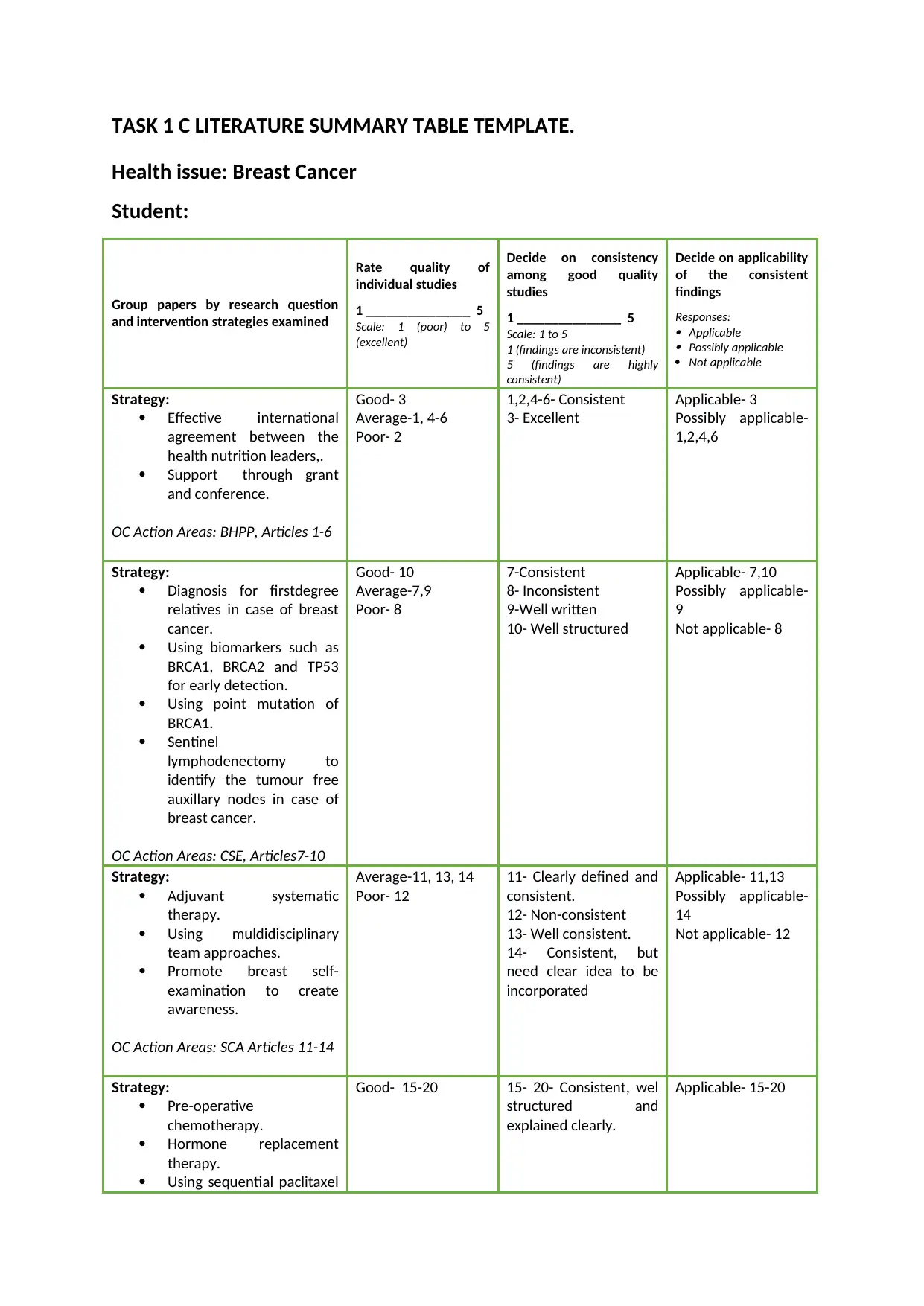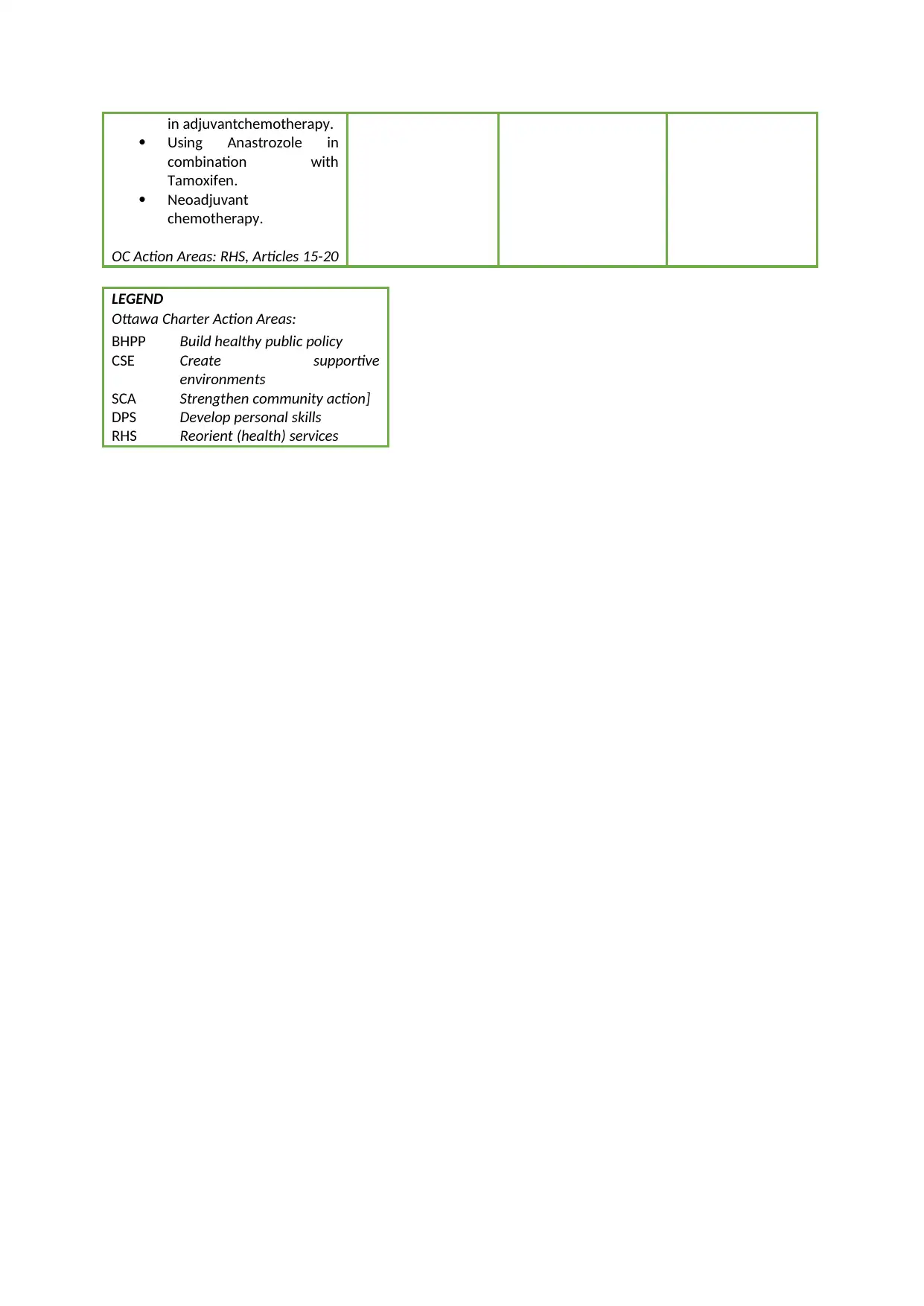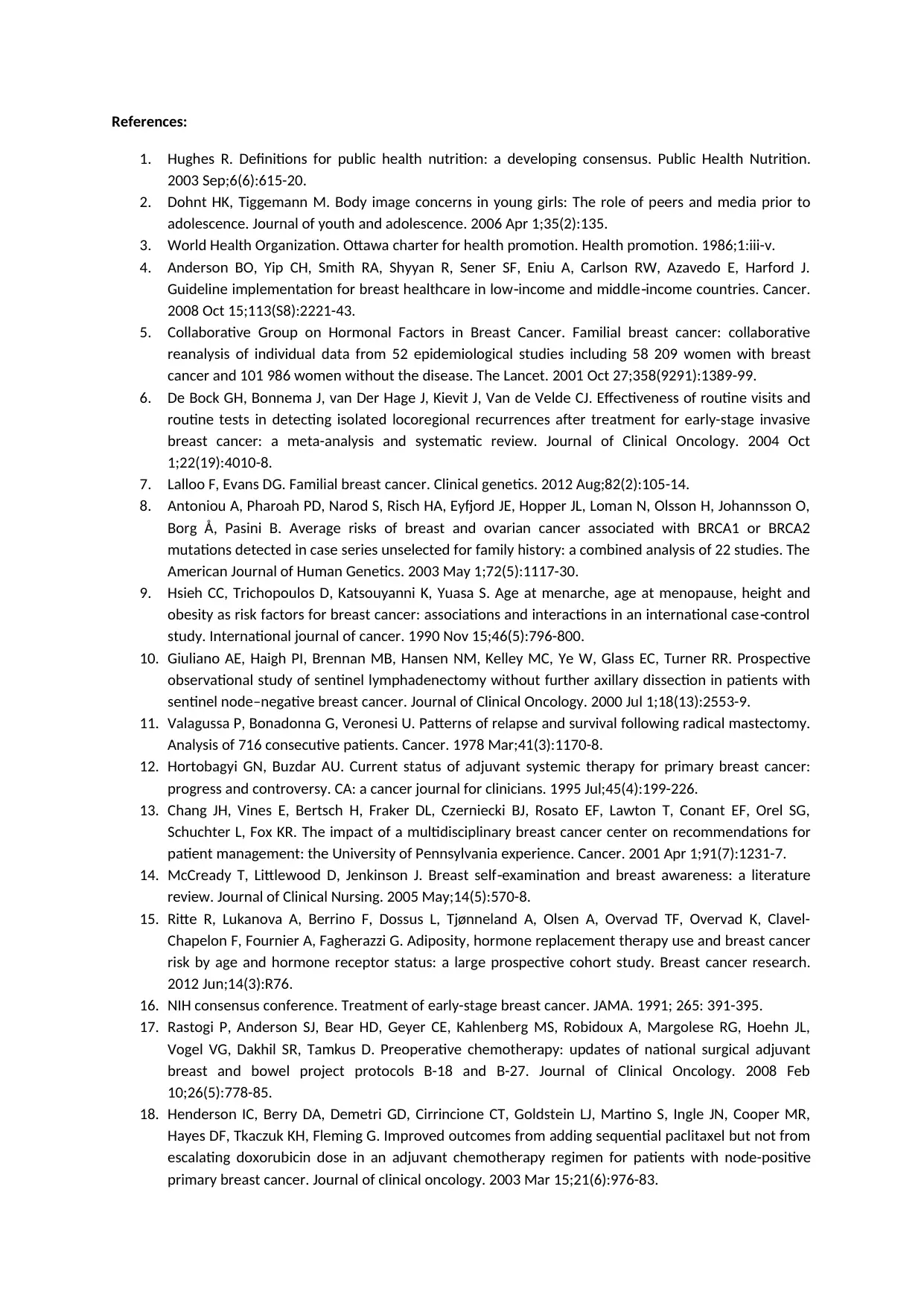Comprehensive Literature Review: Breast Cancer Health and Strategies
VerifiedAdded on 2023/06/07
|4
|1373
|236
Literature Review
AI Summary
This literature review comprehensively examines various health issues and intervention strategies related to breast cancer, drawing from a range of research articles. It assesses the consistency and applicability of findings across different studies, categorizing them based on quality and relevance. The review highlights strategies such as international agreements among health nutrition leaders, early diagnosis using biomarkers like BRCA1 and BRCA2, and the use of sentinel lymphadenectomy. It also explores adjuvant systematic therapy, multidisciplinary team approaches, and the promotion of breast self-examination. Furthermore, the review discusses pre-operative chemotherapy, hormone replacement therapy, and the use of sequential paclitaxel and Anastrozole. The analysis is structured around the Ottawa Charter Action Areas, including building healthy public policy, creating supportive environments, strengthening community action, developing personal skills, and reorienting health services, providing a holistic overview of breast cancer management and prevention strategies. Desklib provides access to this and many other solved assignments.
1 out of 4





![[object Object]](/_next/static/media/star-bottom.7253800d.svg)